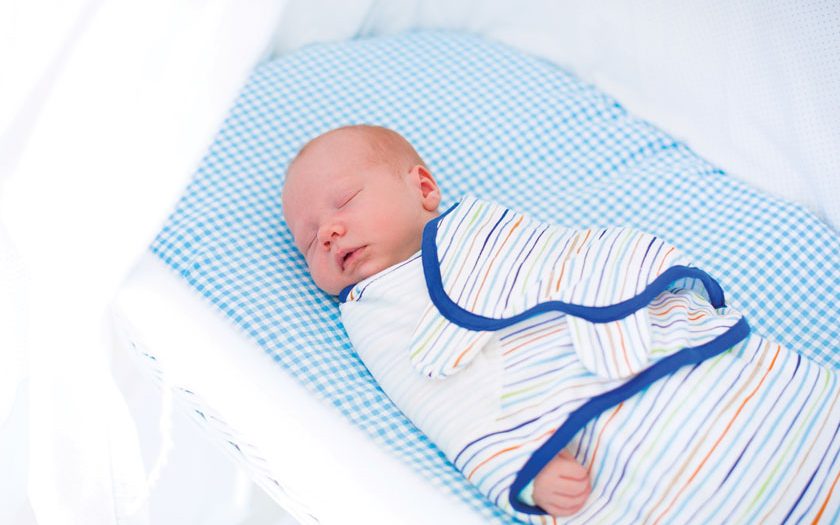Swaddling is an ancient technique of wrapping babies in a blanket or muslin cloth. Swaddling is safe if done properly, and the correct technique is important to avoid the risk of suffocation when the baby is asleep. We asked two experts about baby swaddling, and also to explain the importance as well as the benefits of swaddling. Here’s what they had to share.
Newborn babies can be easily startled by their own movements. Swaddling can help the baby feel safer and more secure like how they feel in their mother’s womb. This helps the baby sleep longer.
Swaddling helps keep babies warm. However, too many layers of swaddling may cause overheating. A thin layer of swaddle on top of the baby’s clothes should be adequate in places where the climate is hot. Signs that may indicate that the baby is too warm include sweating, a flushed face, rapid breathing or even crying.
Although most young babies prefer being swaddled, not all babies may enjoy this. Some babies will start crying whenever they are swaddled. They may feel too hot or dislike the feeling of an overly tight swaddle which restricts their ability to move their arms and legs. Some babies prefer to be swaddled with their arms left free. Babies can be swaddled when being put to sleep, but it is advisable not to swaddle babies all the time, but to give them time to move their arms and legs when they are awake to encourage motor development.
One crucial sign that indicates that a baby is ready to be weaned off swaddling is when the baby starts to turn over. This usually occurs at the age of 3-4 months but can happen as early as 2 months.
Swaddling can restrict a baby’s hand movements. This can pose a danger of suffocation if a baby turns onto its tummy and is unable to use its hands to turn back. Parents can wean a baby off swaddling by swaddling while leaving the baby’s hands-free.
Besides a swaddling blanket or muslin cloths, there are alternative swaddle wraps with zippers or Velcro. This may be a good choice for the baby that doesn’t like traditional forms of snug swaddling and also for babies that are being weaned off from blanket swaddling.
Young babies should never be covered with a loose blanket or quilt as they are unable to remove the blanket if it slipped and covered their face, leading to a risk of suffocation. Babies should also always be put to sleep on their backs when swaddled. Avoid putting them on their tummies as this increases the risk of sudden infant death syndrome (SIDS)
Steps to swaddling with a blanket:
- Place your baby on a flat surface like the bed while lying on their back
- Prepare a thin swaddling blanket. Open up the blanket in a diamond shape. Fold the blanket’s top corner down to create a triangular shape.
- Place your baby’s shoulder just on the folded edge of the blanket. The baby’s head and neck should be just above the folded edge.
- Place one arm straight down alongside the body, and wrap the same side of the blanket over the arm and chest, tucking the edge of the blanket underneath the back.
- Fold the bottom corner of the blanket up if it is too long and you can tuck it on the first fold.
- Straighten the other arm and pull the blanket over the chest and tuck it over the opposite side of the back.
- Ensure that the blanket is snug but not too tight, allowing the baby to have some movement of the arms and allowing them to breathe easily.
- Make sure the blanket is not too tight over the baby’s hip so the baby can flex the hip comfortably. A swaddle that is too tight over the hip can cause damage to the hip.
- Ensure the blanket is not too loose that can get unwrapped during sleep, as this may cause it to cover the baby’s face and nose, causing suffocation.
- Place the baby to sleep on his or her back. Never swaddle babies on their tummy.
- It is alright not to swaddle if your baby doesn’t like swaddle.
Note for moms
A baby may also cry for other reasons, for example, hunger, wet diapers, seeking attention or wanting to be carried. Parents have to observe the baby’s response to identify what their baby prefers.

Consultant Pediatrician,
Columbia Asia Hospital – Klang
Swaddling is an ancient method of wrapping babies in a blanket or cloth. Swaddling helps to keep babies feeling safe and secure by preventing them from flailing their arms and legs. A swaddle also keeps the baby cosy and warm.
Not all babies love swaddling, however. If swaddling makes your baby more upset than calm, then you don’t have to do it. You may try to unleash your baby’s arms out of the blanket. You may try out different styles and types of the swaddle. If nothing works out, it is entirely fine to not swaddle your baby.
There are many ways to swaddle a baby. Some swaddles come with velcro or zipper closure to make it easier. It is important to note that the swaddle should be snug but not too tight. You should be able to place 2-3 fingers between your baby’s chest and the blanket. Make sure the baby’s face is not covered by the swaddle blanket.
Sometimes, a swaddle blanket that is too loose or comes unwrapped during sleep could cover a baby’s face and potentially cause suffocation. Do not over-wrap a baby with multiple layers or a thick blanket during hot weather to avoid over-heating. Sweating, damp hair, flushed cheek, heat rash and rapid breathing are the signs that your baby might be too hot.

Consultant Paediatrician,
Sri Kota


